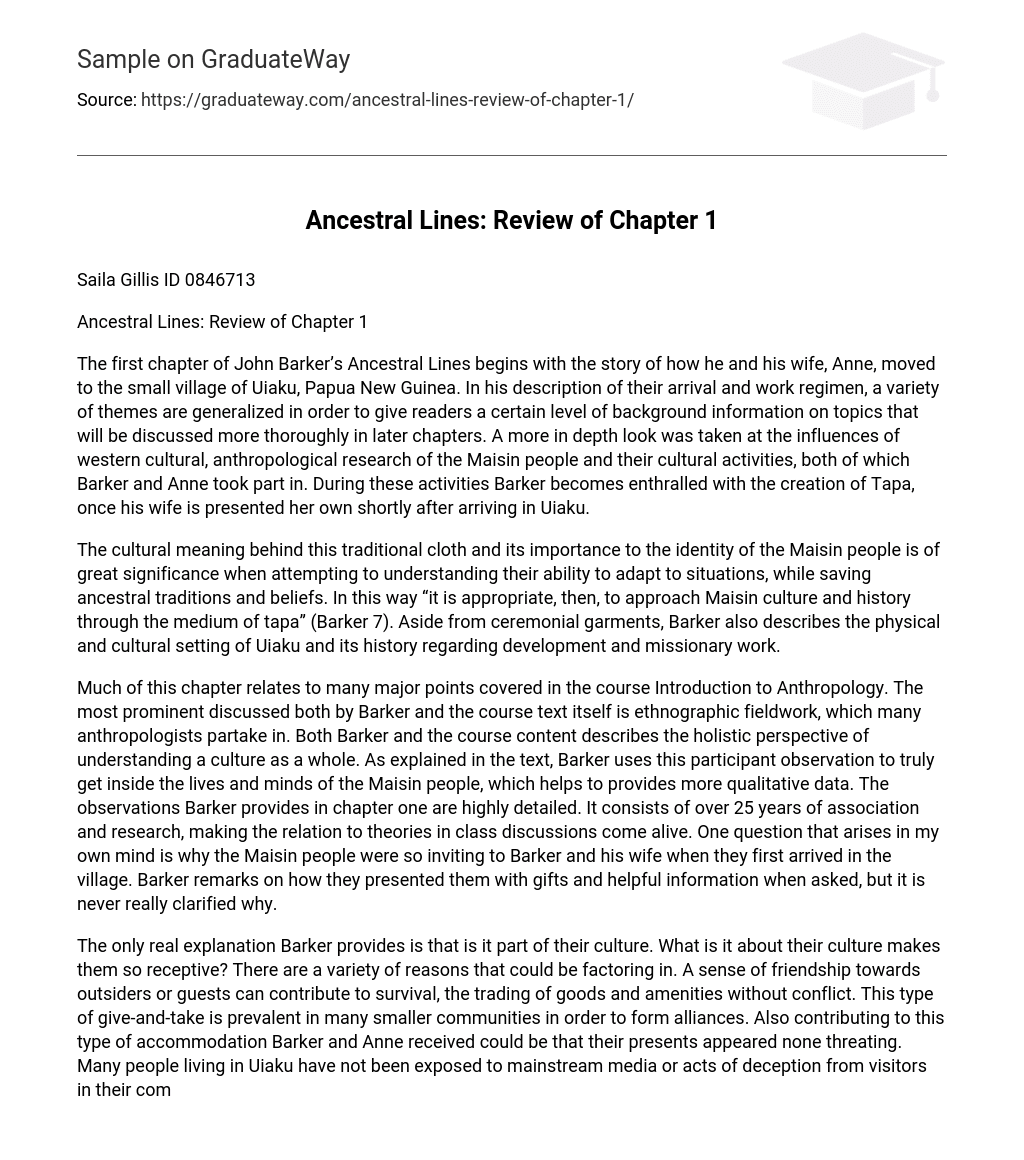The first chapter of John Barker’s Ancestral Lines begins with the story of how he and his wife, Anne, moved to the small village of Uiaku, Papua New Guinea. In his description of their arrival and work regimen, a variety of themes are generalized in order to give readers a certain level of background information on topics that will be discussed more thoroughly in later chapters. A more in depth look was taken at the influences of western cultural, anthropological research of the Maisin people and their cultural activities, both of which Barker and Anne took part in. During these activities Barker becomes enthralled with the creation of Tapa, once his wife is presented her own shortly after arriving in Uiaku.
The cultural meaning behind this traditional cloth and its importance to the identity of the Maisin people is of great significance when attempting to understanding their ability to adapt to situations, while saving ancestral traditions and beliefs. In this way “it is appropriate, then, to approach Maisin culture and history through the medium of tapa” (Barker 7). Aside from ceremonial garments, Barker also describes the physical and cultural setting of Uiaku and its history regarding development and missionary work.
Much of this chapter relates to many major points covered in the course Introduction to Anthropology. The most prominent discussed both by Barker and the course text itself is ethnographic fieldwork, which many anthropologists partake in. Both Barker and the course content describes the holistic perspective of understanding a culture as a whole. As explained in the text, Barker uses this participant observation to truly get inside the lives and minds of the Maisin people, which helps to provides more qualitative data. The observations Barker provides in chapter one are highly detailed. It consists of over 25 years of association and research, making the relation to theories in class discussions come alive. One question that arises in my own mind is why the Maisin people were so inviting to Barker and his wife when they first arrived in the village. Barker remarks on how they presented them with gifts and helpful information when asked, but it is never really clarified why.
The only real explanation Barker provides is that is it part of their culture. What is it about their culture makes them so receptive? There are a variety of reasons that could be factoring in. A sense of friendship towards outsiders or guests can contribute to survival, the trading of goods and amenities without conflict. This type of give-and-take is prevalent in many smaller communities in order to form alliances. Also contributing to this type of accommodation Barker and Anne received could be that their presents appeared none threating. Many people living in Uiaku have not been exposed to mainstream media or acts of deception from visitors in their community. This can provide a sense of trust that has not yet been corrupted.





